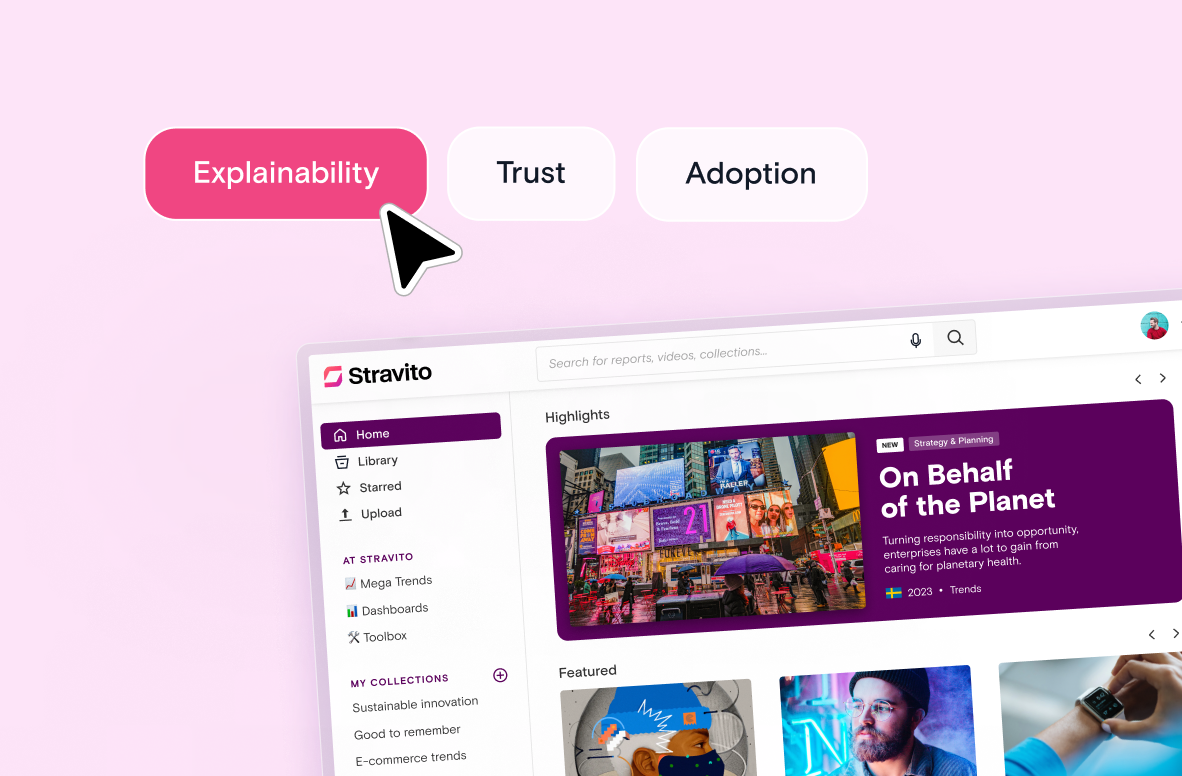76% of FMCG product launches fail within a year, according to Nielsen. In other words, if you’re launching four new products this year, three of them will likely soon be taken off the market. When analysing the few products that achieved innovation success, Nielsen found that it wasn’t just a matter of finding the right solution, but also about testing it effectively, communicating it correctly, and making the process a true team effort.
The importance of using all available knowledge from around the organisation to make the best decisions is essential to these key practices. And without a strong knowledge management strategy, it is difficult (if not impossible) to actually use all the data and knowledge stored away in employees heads, email inboxes, and shared filedrives. So ultimately, finding the right solution, testing it effectively, communicating it correctly, and making the process a true team effort becomes a matter of luck rather than a well-founded process. And three times out of four, you won’t be so lucky.
Changes in consumer values, the emergence of specialised consumer niches, and the ever-increasing amount of unstructured data compound this importance. Having the right insights at the right time for all your employees is crucial for success.
In this article, we identify 3 key factors that can help you determine the strength of your knowledge management strategy.
Effective collaboration
Research has shown that when it comes to innovation, two brains are better than one. Effective collaboration is essential for generating successful innovative ideas, but one report found that a staggering 74% of CPG professionals feel that their company is ineffective in their collaboration efforts. A common reason that collaboration is avoided is that it is seen as taking too much time. However, this perspective is short-sighted.
While collaboration is, to some extent, inherently more time-intensive than independent work, the real issue lies in low-value collaboration tasks, such as requesting files, clarifying informational disconnects, or resolving likely subsequent conflict. In addition to extending the timeline of a project, these activities take away time that could be spent on more value-adding exchanges, such as refining a strategy or identifying innovative solutions. And it is these latter forms of collaboration that will contribute to your likelihood of product innovation success.
Time spent looking for information
After being interrupted, it takes knowledge workers an average of nearly 25 minutes to regain focus and return to the task they were previously working on. How often do you put on hold whatever you’re working on to help a co-worker find something? If your company’s knowledge management strategy is weak, employees are likely to be sending messages or emails just to ask about where to find a certain file or if there is a report that could answer a certain question. This lack of individual empowerment forces employees –like you– to put energy into low-value activities such as locating documents or answering unnecessary emails. Depending on how weak your knowledge management practices are, this continuous quest for information can quickly spin a web of distraction, lowering productivity and thus negatively affecting business performance–simply because someone couldn’t find the report they were looking for.
A report by McKinsey shows that, on average, 19% of knowledge workers’ time is spent looking for information and that 28% of their time is spent reading and answering email. Both percentages represent time that could be better used for making decisions and applying the vast amount of knowledge your company has no doubt accumulated. Because after all, having acquired the insights is only a small part of the equation. Performing analysis and deciding on how to proceed is the most important part of a market research project. But how can you make the most of all that knowledge if you can’t find anything more than your very latest research report?
Prevalence of data graveyards
A data graveyard is exactly what it sounds like–a place where insights are buried. It could be a poorly organised team drive, a seldom-used intranet, or the downloads folder on your computer. Each graveyard comes at an incredible expense to the business who initially paid for it, as even the most game-changing market research report is rendered worthless if no one can find or use it. Often, new reports are looked at once before being filed away, never seeing the light of day again.
Perhaps the biggest problem with having data graveyards is that they create a vicious cycle within your business. Once you’ve created one data graveyard, you’re more likely to have another. If employees know that a system isn’t current or that it isn’t regularly used, then they will likely find their own way to share and store information.
Valuable market research being lost in one or multiple data graveyards decreases your chances of effectively incorporating all relevant insights into your product development cycle, ultimately putting you at increased risk of innovation failure.
The bottom line:
In today’s business world, it’s difficult to manage your market knowledge without a dedicated system that helps you take out all the guesswork. Making sure that everyone is empowered and able to find the right knowledge and insights at the right time is key to developing successful innovations that your consumers will love.




